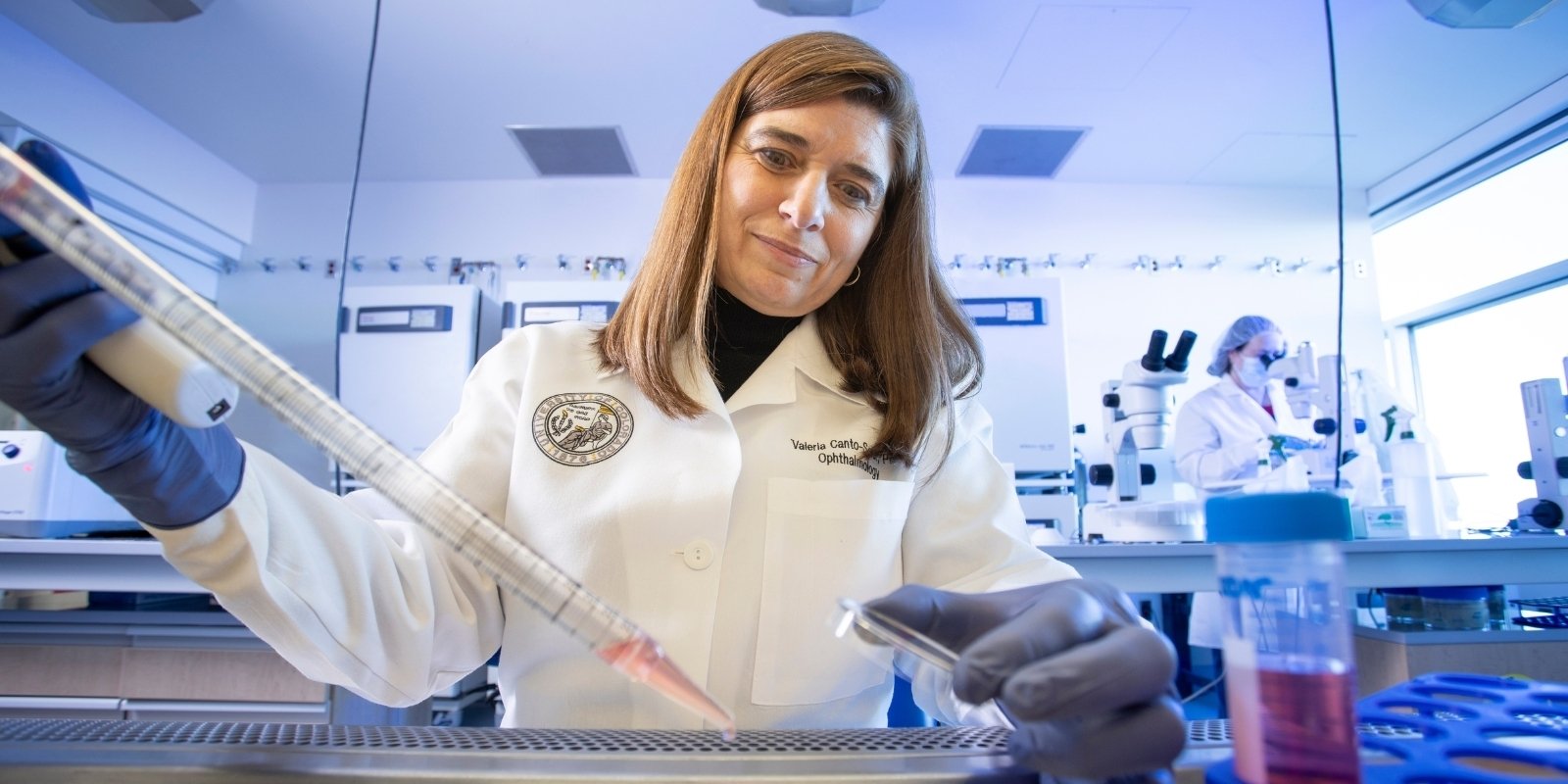NEAR HANKSVILLE, UTAH – Ben Easter, MD, steps onto a rocky ledge overlooking a dry riverbed. He cranes his neck and points into the canyon.
“Right here,” the emergency medicine doctor says with a gleeful glint, belying his boyish looks, “we’re going to foment some chaos and see what happens.”
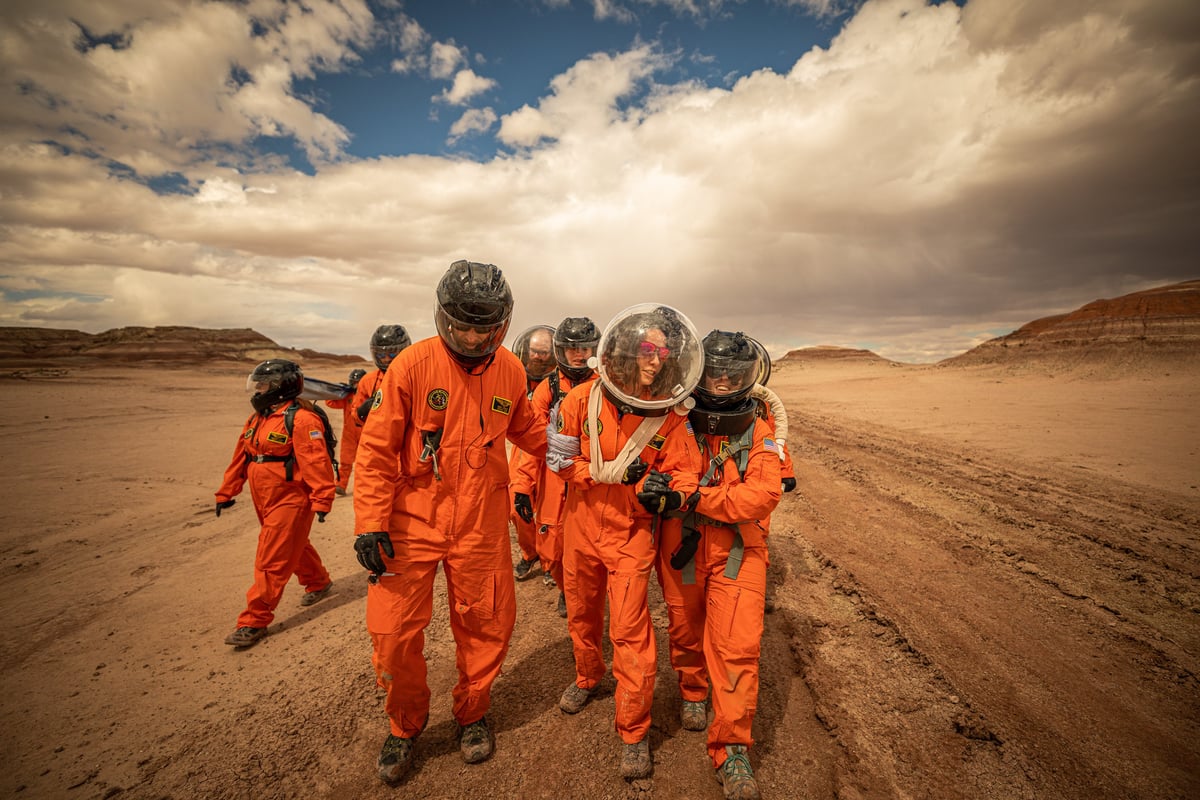
Students tend to an injured crewmate (instructor Allie Anderson) during a simulation exercise at the “Medicine in Space” class in southern Utah.
The simulation is designed to test whether students, thrust into a search-and-rescue scenario where they must navigate rugged topography and rapid-fire events, are able to organize into teams and solve cascading problems, all the while racing the clock to save injured and ill crewmates.
“We want them to walk up onto this ridge and not know where exactly the patient is, and have a kind of ‘oh crap’ moment,” says Easter, on the teaching staff of a new class that blends wilderness medicine and aerospace engineering.
In a remote part of southern Utah – at the Mars Desert Research Station to be precise – 21 University of Colorado Boulder aerospace engineering students, a mix of graduate students and undergrads, became Martians. They experienced seven days of gut-knotting, brain-twisting moments along with after-burner bursts of inspiration – nudging more than a few students into changed-life territory.
New horizons
It all comes courtesy of a cross-discipline teaching team and its novel idea to create a boundary-pushing Maymester course.
“Medicine in Space and Surface Environments” blends the expertise of CU Anschutz emergency medicine physicians with the engineering minds of CU Boulder students and Assistant Professor of Aerospace Engineering Allie Anderson, PhD. Anderson and Easter co-led the three-week class, which started with the engineers obtaining Wilderness First Aid certification in Boulder.
MEDICINE ON MARS: A three-part series
- Part one, story and photos: Medical Care at the Final Frontier
- Part two, podcast: Hear from the 2Mars crew inside the Hab
- Part three, video: Take an inside look at preparing first responders for space
The course cements the unique positioning of CU Anschutz and CU Boulder experts, along with aerospace firms on the Front Range, to solve the complex problems arising from humankind’s most ambitious quest – to travel the roughly 250 million miles to Mars, and ultimately colonize the desolate planet.
Mit Senavinin, a senior in aerospace engineering, said the week in the desert propelled him to consider new career paths in aerospace medicine.
“You don’t really have that firsthand experience or get that frame of reference without these trainings,” he said, still sweating from doing 40 minutes of CPR on “fallen” crewmates who had been electrocuted.
So now Senavinin is rethinking his plan to become a jet pilot. “This class has really made me want to go into medicine,” he said. “This experience opened that door. It’s really the bridge between engineers and physicians.”
Impulse to explore
Conversely, Marissa Palamara said the medical scenarios gave her the “heebie jeebies,” but as a sophomore in aerospace engineering she relished all the engineering problems thrown at students.
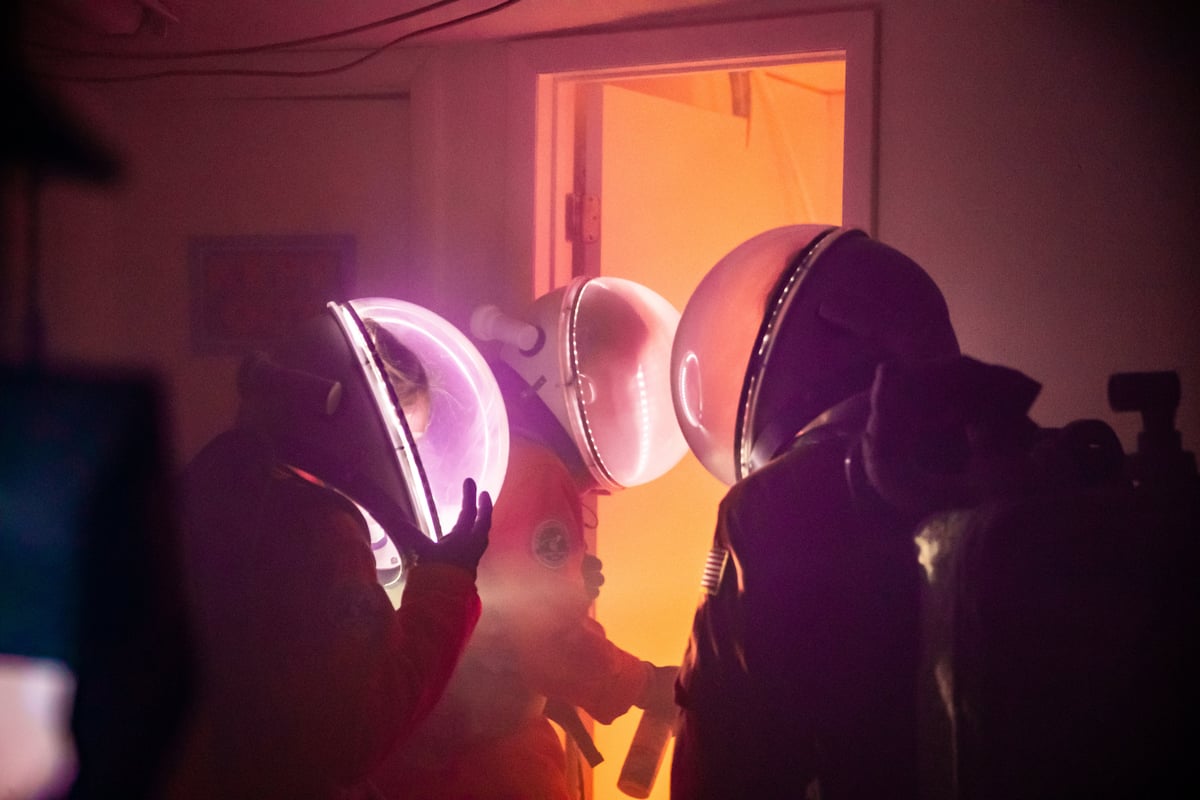
In one of the many emergency exercises, students battled a simulated fire that broke out inside the Habitat on Mars.
How do you perform CPR through a spacesuit (answer: not easily)? How can one piece of spacecraft equipment be designed for multiple functions? Can a spacesuit be retooled to minimize astronaut exertion? Because muscle atrophy is common for astronauts, what kinds of exercise equipment could keep crew members fit on a lengthy voyage?
‘This experience opened that door (to studying medicine). It’s really the bridge between engineers and physicians.’ – Mit Senavinin, a senior in aerospace engineering
As the trainings unfolded, each growing in complexity, the students navigated the unpredictable nature of the human factor – “the soft fleshy thing inside the spacesuit,” as one instructor put it – in all its messy and complicated glory.
“We get to see how different people lead, how people play different roles within the team, and just how to work more effectively as a team,” Palamara said. “That’s all very important as engineers.”
The simulation exercises, which are the norm in medical training, aren’t as typical for engineering students, according to Anderson. The class offered a pulse-pounding sense of what biomedical engineering is really like, she said.
“This course,” added Easter, “is all about bringing those two disciplines together to improve what we can accomplish in human space flight.”
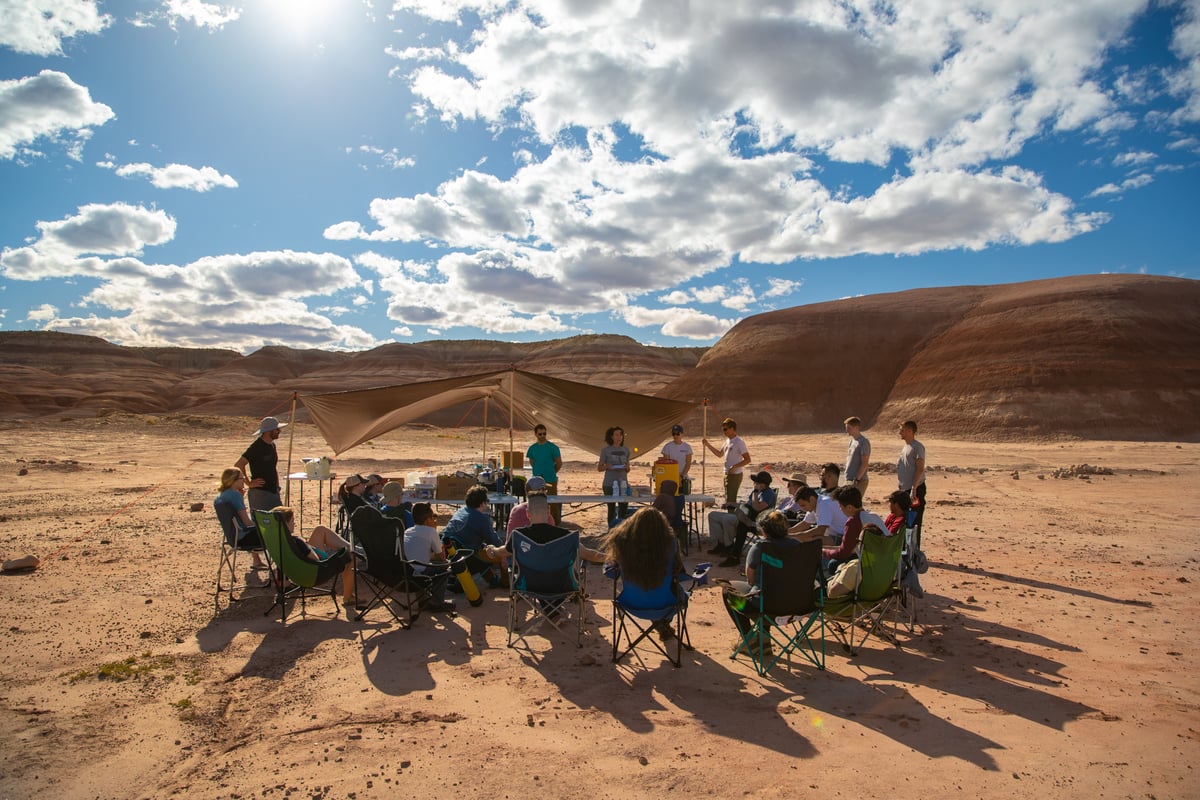
Allie Anderson, PhD, center (gray T-shirt), leads a session on a rare sunny day during the Maymester week at the Mars Desert Research Station.
It’s also about a basic human impulse.
“Humans have an innate sense of exploration and desire to cross an ocean or climb the next hill to see the view,” Easter said. “And now that frontier has become space – the moon and eventually on to Mars. I think something about working together to accomplish those goals just satisfies something within us as explorers.”
‘Can anyone hear me?’
For seven days the students were Martians. They donned orange spacesuits in addition to – during the many simulations (aka extra-vehicular activities, or EVAs) – helmets, gloves, air packs and radio units.
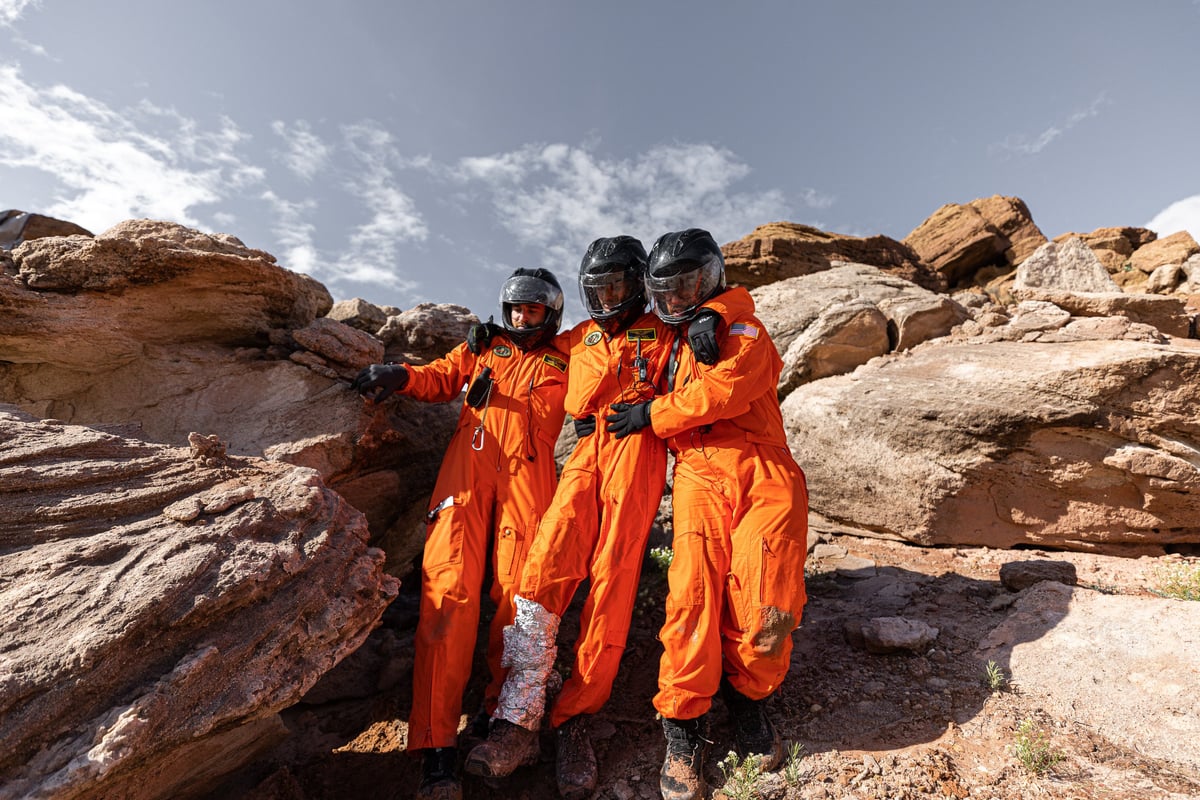
Crewmates come to the aid of Amin, center, during a search-and-rescue exercise in a rugged canyon.
The brisk desert wind buffeted the group as excursions unfolded on foot and in motorized rovers across a very Martian-like backdrop. The research station campus, operated by the Mars Society, stands in stark white contrast to the Playdough-esque jumble of Utah’s otherworldly landscape of red spires, hoodoos and powdery sand.
In the search-and-rescue EVA, the crisis was daunting: an aborted spacecraft launch left three astronauts strewn across a ravine, including a hypoxic one perched on a distant outcropping. The crash triggered a multifaceted operation that only intensified when a search-party member suffered a “broken” ankle and was mistakenly left behind.
He patched through a message: “This is Amin. Can anyone hear me? (Silence on the radio). Please come in. I’m hurt and lost and unable to walk. (More silence). I don’t want to die here.”
Ten minutes later, a crewmate scrambled to Amin’s canyon location with an urgent message about dwindling air. The rescuer, swinging Amin’s arm over his shoulder, was direct: “Our consumables are getting very low, so we need you to keep up the pace, OK?”
Cardiac arrest, asthma attack, hypoxia, disorientation, electrocution, broken bones and smoke inhalation were among the maladies the students confronted on Mars. Triage units sprang up in the Hab, splints were applied in the field, and stretchers were created from found fabrics.
“It’s like ‘The Martian’ movie – some true, some Hollywood – but it keeps your head spinning,” said Gregory Vorontsov, a graduate student in bioastronautics, who aspires to become an astronaut. “The instructors throw out these problems, and it becomes: What do you do? How do you keep your head cool in crazy environments when chaos breaks out?”
Thinking from a different angle
Compared to the resources available on Mars, the medical systems on the International Space Station (ISS) are luxurious. For instance, if an ultrasound image is needed in orbit, an Earth-based doctor can provide real-time, step-by-step guidance from Mission Control. Or, if a major medical emergency occurs, an ISS astronaut could be at a terrestrial hospital within one to two days.
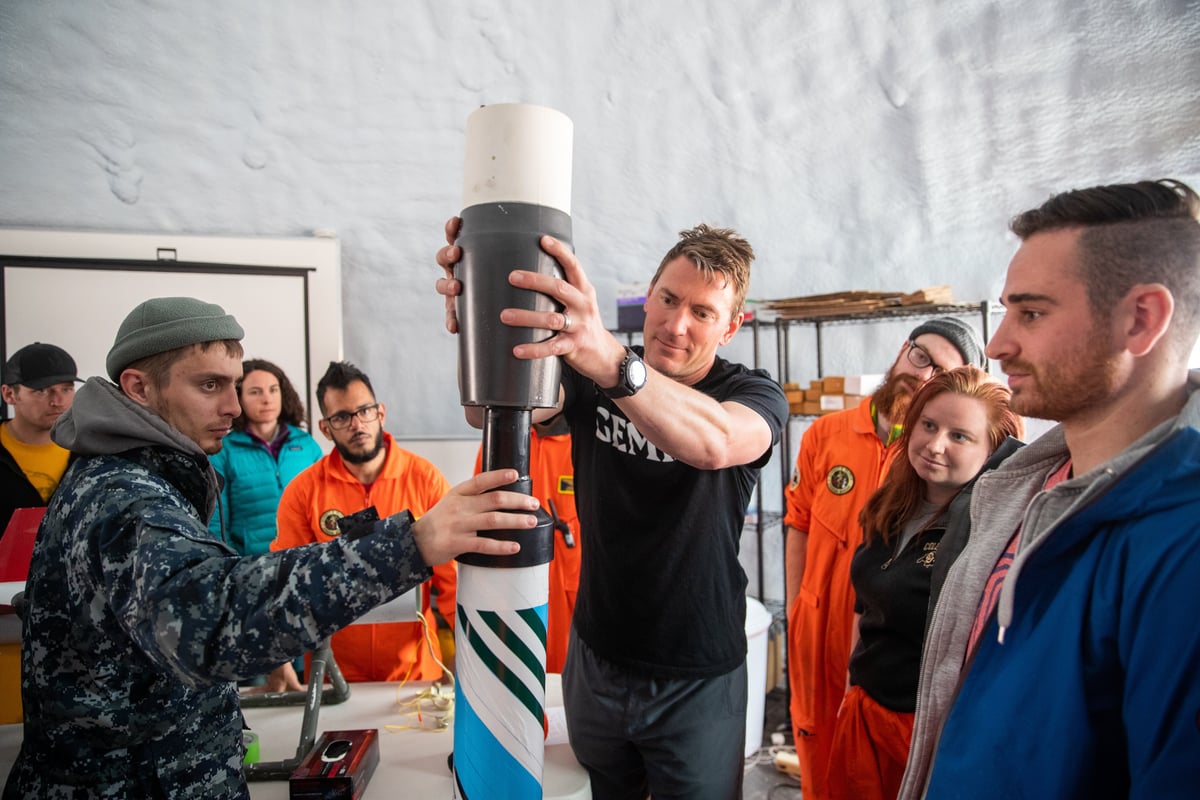
Gregory Vorontsov, left, a graduate student in bioastronautics, helps Sean Serell, MD, an anesthesiologist at UCHealth, prepare a rocket at the Mars Desert Research Station.
But many Earth-based interventions don’t work on Mars.
“You’ve got to start thinking medically from a completely different angle,” Vorontsov said. “You can’t even get right to the patient’s skin. Plus, the factors of (spacesuit) decompression, and what do you do if something breaks?”
There is also the very serious issue of surviving the actual trip to Mars. It’s a six- to nine-month voyage with no instant messaging to Earth; one-way communication delays, between a spacecraft and command center, range from four to 20 minutes each way.
“Whatever resources we take with us when we leave Earth are what we’re going to have with us for the entire time period of the mission,” Easter said. “Evacuating an injured crewmember to a hospital will be impossible, and resupply will be minimal to non-existent. So the design and scope of an exploration medical system really needs to be much more comprehensive than our current paradigm with the International Space Station.”
Pushing the limits
James Kurrle, MD, who is training to be an aerospace doctor in his native Australia, met Easter at an aerospace medicine course offered through the University of Texas Medical Branch. The UTMB class is where several of the wilderness medicine instructors met and started putting together the space medicine curriculum.
On day six in the desert, when the sky finally cleared, Kurrle glanced between the heavens and the terrestrial actions of another EVA. He watched the students prepare to launch a small rocket 12,000 feet above the research station. The plan was to precisely propel medical supplies hundreds of miles, from one Martian Hab to another.
While this rocket exercise amounted to a “micro” training, the blunt-talking Aussie sums up the challenges of “macro” space travel – and aerospace medicine – thusly: “You need to engineer the hell out of it to make it safe.”
.jpg?width=1200&length=1200&name=_F9I9986%20(1).jpg)
The Mars Desert Research Station, located near Hanksville, Utah, glows under the desert night sky.
And that’s just considering the relatively short, into-orbit-and-back trips being launched by private companies such as SpaceX, Blue Origin and Virgin Galactic. Issues multiply astronomically when spaceflight extends millions of miles into a highly radiated environment, a place of no do-overs.
“Especially when it comes to medicine,” Kurrle said, “there’s the known unknown, and then there’s the unknown unknown – you don’t even know that you don’t know something. With classes like this, that’s where we’re trying to push the limits.”
Rocketing toward ‘risk analysis’
In addition to being a physician and an assistant professor in the CU School of Medicine, the Harvard-educated Easter is the Deputy Element Scientist in NASA’s Exploration Medical Capability, part of the space agency’s Human Research Program.
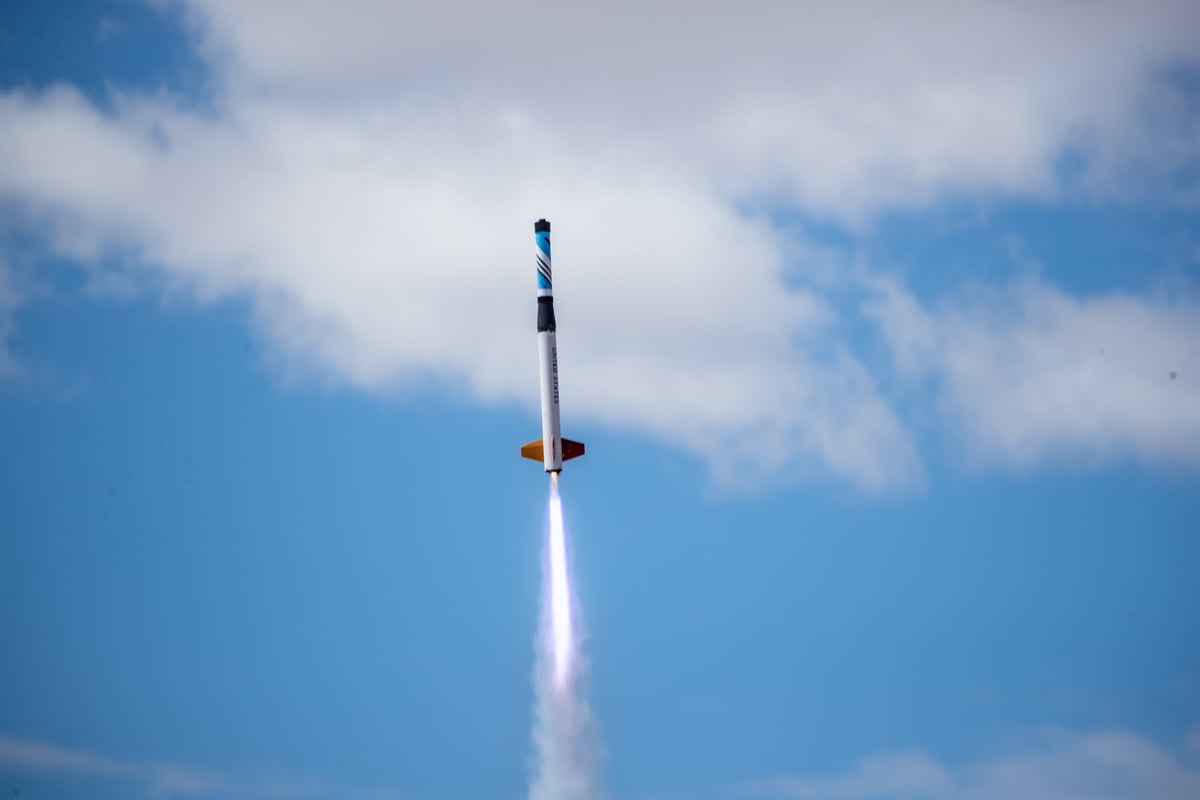
Students in the aerospace medicine course launch a rocket 12,000 feet above the research station. In the simulation exercise, they propelled medical supplies hundreds of miles, from one Martian Habitat to another.
Easter said the “Medicine in Space” class intentionally draws from “probabilistic risk analysis,” a key element of engineering. It’s all about learning how engineers think and talk about buying down risk.
“We’re translating our medical expertise into the language that the rest of NASA is using,” he said. “Certainly, CU Boulder is one of the leaders in the world in this field of doing the actual research that’s helping NASA to buy down those risks.”
In a different iteration of the course, “Martian Medicine Analogue and Research Simulation,” Easter’s team teaches physicians, who come from all over the world, about medical emergencies arising in space. The healthcare professionals experience similar trials of communicating on a single radio frequency, trekking over foreign terrain, and prioritizing multiple issues to achieve the best outcome.
Discovering exceptionalism
For the students, many unforeseen challenges were best weathered with a laugh.
Like when tents somersaulted in the desert wind. Or when the tarp protecting their makeshift “mess hall” collapsed. Or when overnight temperatures plunged into the 30s.
Arika Armstrong, an aerospace graduate student as well as an engineer for Lockheed Martin Corp., said the adversity only enhanced matters (listen to a podcast featuring Armstrong, Anderson and Easter). “You’re talking about isolated, extreme environments (of space), so what better than to throw a group of college students out in the rain and wind and cold and have them figure out how to deal with things?”
She recounted how all 21 students got on the same radio channel in the first EVA – “a disaster; everyone was talking to each other” – and by week’s end were nearly flawless in their communications. “We had to figure out how to make it work, and we absolutely did,” Armstrong said.
Anderson, the aerospace engineering professor, likewise saw students change; they grew in confidence and even discovered their exceptionalism.

A space helmet, worn by CU Boulder mechanical engineering student Giordan Thompson, glows in the dark desert night. Communicating by radio with over 20 people proved to be quite challenging, the students learned.
“You see some students who were almost fearful of a leadership position over the course of the week say, ‘Yeah, I want to do that. I want to take charge, because I know that I’m needed right now,’” she said. “I think that’s another reason why the experiential learning is so important.”
Out-of-this-world goosebumps
Britney Force, a sophomore in aerospace engineering, kissed her comfort zone goodbye almost immediately.
First, her tent was tossed by the wind, and she slept the rest of the week in her SUV. Then, after a communications snafu on the search-and-rescue drill, she was thrust into a point position for triaging patients. Force, who aspires to work for Elon Musk’s SpaceX, said, “It was fun to be in charge … even for me, with no medical experience.”
Reflecting on the week – the moody weather, the tedious camp food and the rigorous curriculum – Force realized she was smitten.
“We first got in the spacesuits and stepped in the airlock and did the light exercise just like astronauts do. And then walking out,” she said, her eyes scanning the horizon. “It gave me goosebumps just to imagine what that would actually be like. It was really cool.”
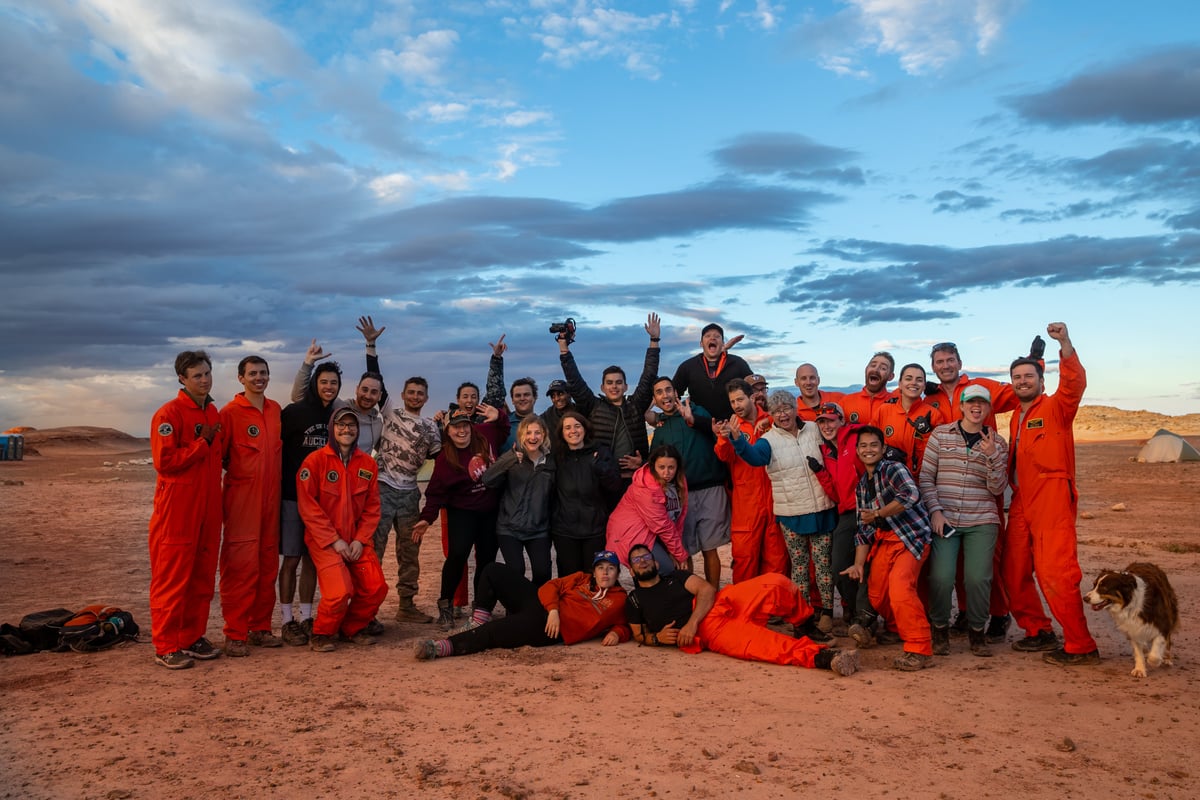
Students and instructors participating in “Medicine in Space and Surface Environments” enjoy a light moment near the end of the three-week Maymester class.
Instructors in the CU Anschutz-CU Boulder collaborative Maymester course, “Medicine in Space and Surface Environments,” were:
- Benjamin Easter, MD, assistant professor of emergency medicine at the CU School of Medicine
- Allison Anderson, PhD, assistant professor of aerospace engineering sciences at CU Boulder
- Dana Levin, MD, Columbia University Department of Emergency Medicine
- James Kurrle, MD, aerospace medicine resident in Australia
- Arian Anderson, MD, emergency medicine resident at Denver Health
- Joel Vaughan, MD, an EMT for UCHealth
- Katie Joy, teaching assistant for the Department of Emergency Medicine, Wilderness Medicine Section, CU School of Medicine
- Sean Serell, MD, anesthesiologist at UCHealth
- Rick Cole, MD, flight surgeon at NASA and emergency medicine physician
Photos by Matt Kaskavitch, director of digital engagement in the Office of Communications, CU Anschutz.


